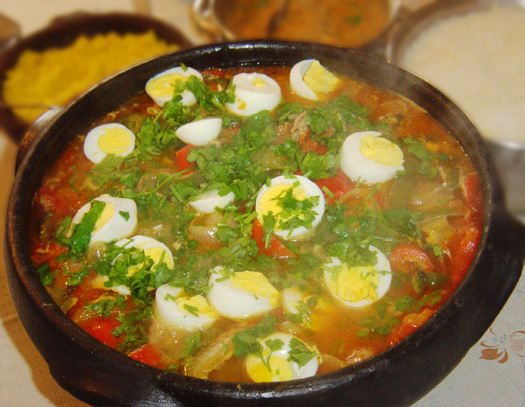Facts About Moqueca
Moqueca is a delightful traditional Brazilian seafood stew, slowly simmered to perfection in a terracotta casserole. This flavorful dish can be made with shrimp or fish and is infused with a mix of tomatoes, onions, garlic, lime, and coriander. The name "moqueca" derives from the Kimbundu word "mu'keka."
There are two main types of moqueca: Moqueca Capixaba and Moqueca Baiana.
Moqueca Capixaba originates from the state of Espírito Santo and represents a beautiful blend of Brazilian and Portuguese culinary traditions. This version is lighter and more delicate compared to its Bahian counterpart. Instead of using palm oil, it incorporates lighter oils like extra-virgin olive oil. Unique ingredients like Urucum pigment give it a distinctive color, and it is traditionally cooked in a clay pan. Whether made with fish, shrimp, crabs, or lobsters, it’s seasoned with onions, tomatoes, coriander, and chives. Moqueca Capixaba is often accompanied by pirão, a creamy paste made from cassava root flour and the stew's rich gravy.
Moqueca Baiana comes from Bahia, Brazil, and is influenced by African and Portuguese flavors. This version is richer, thanks to the addition of dendê palm oil and coconut milk. It’s usually garnished with fresh coriander and served with rice and farofa, a toasted cassava flour mixture.
A special feature of Moqueca Capixaba is the use of the Capixaba pan, known as panelas de barro. These traditional pans are crafted from black clay and glazed with mangrove tree sap for water resistance. In Vitória, a dedicated group called "Associação Das Paneleiras De Goiabeiras" works to preserve the art of making these unique clay pans.
Enjoying a bowl of moqueca is like embarking on a flavorful journey through Brazil's rich culinary history.

 Peru
Peru